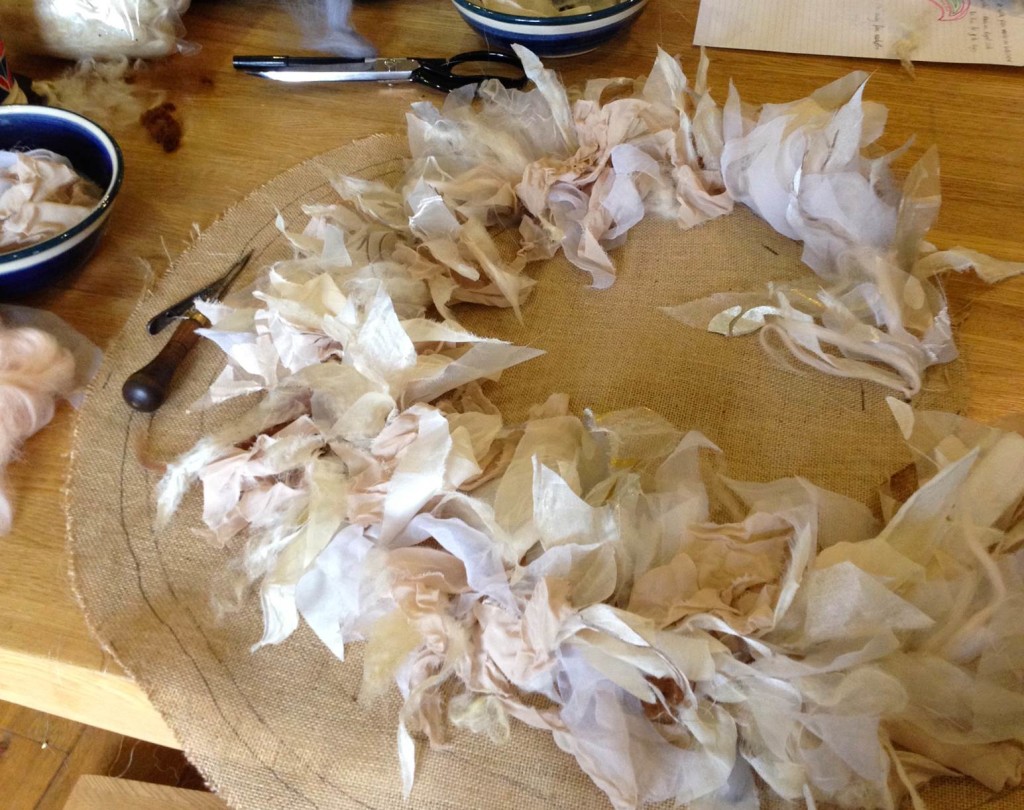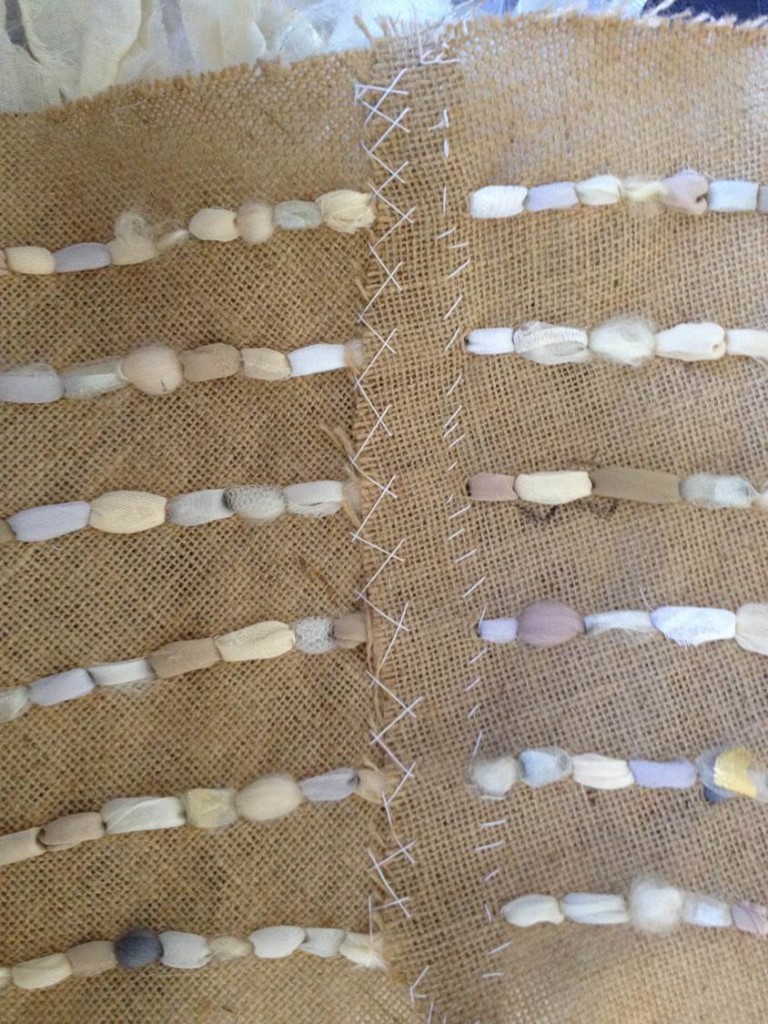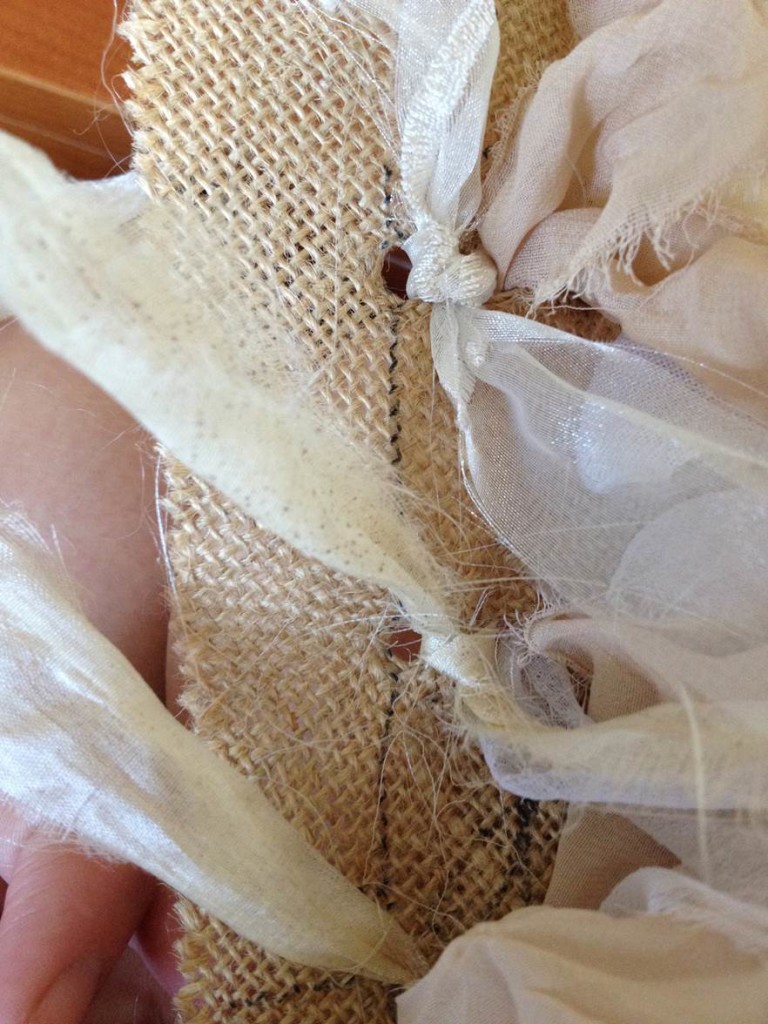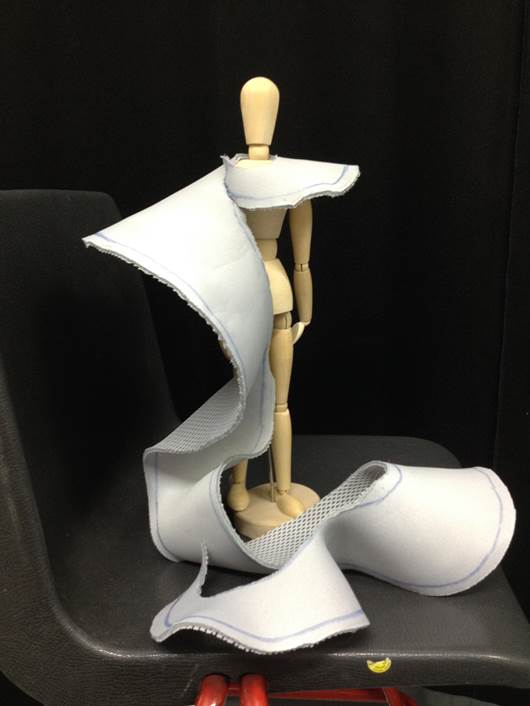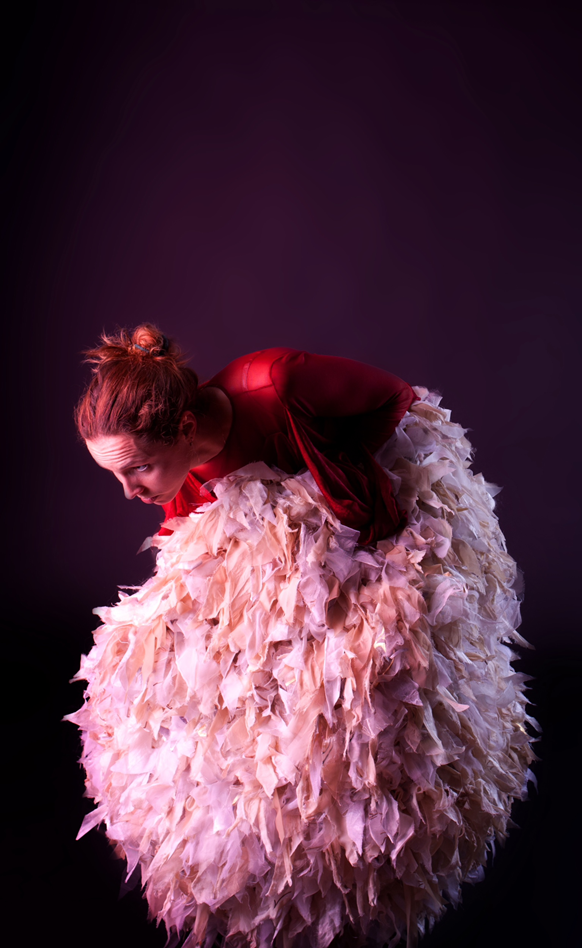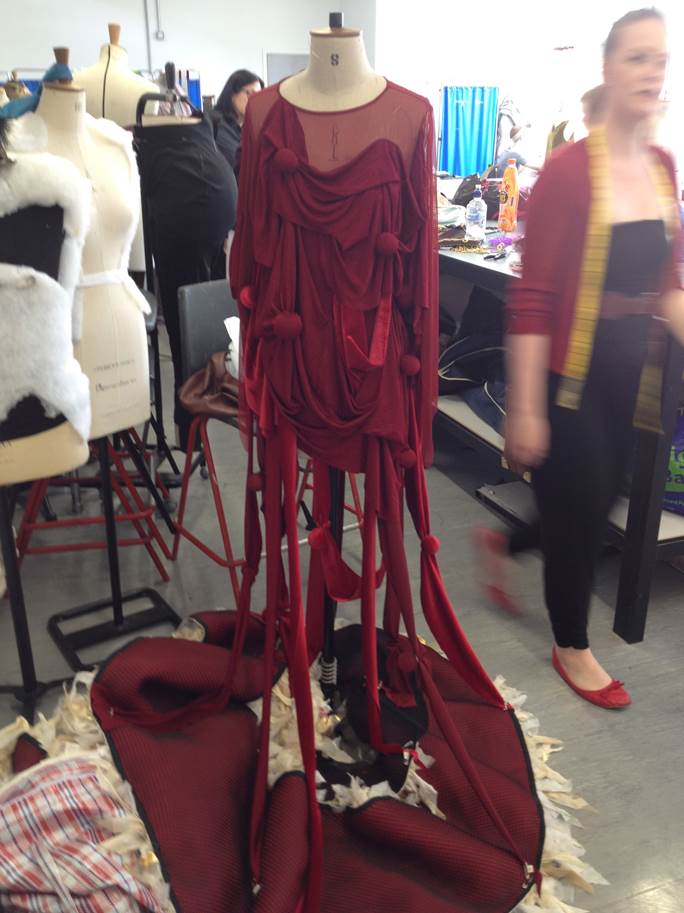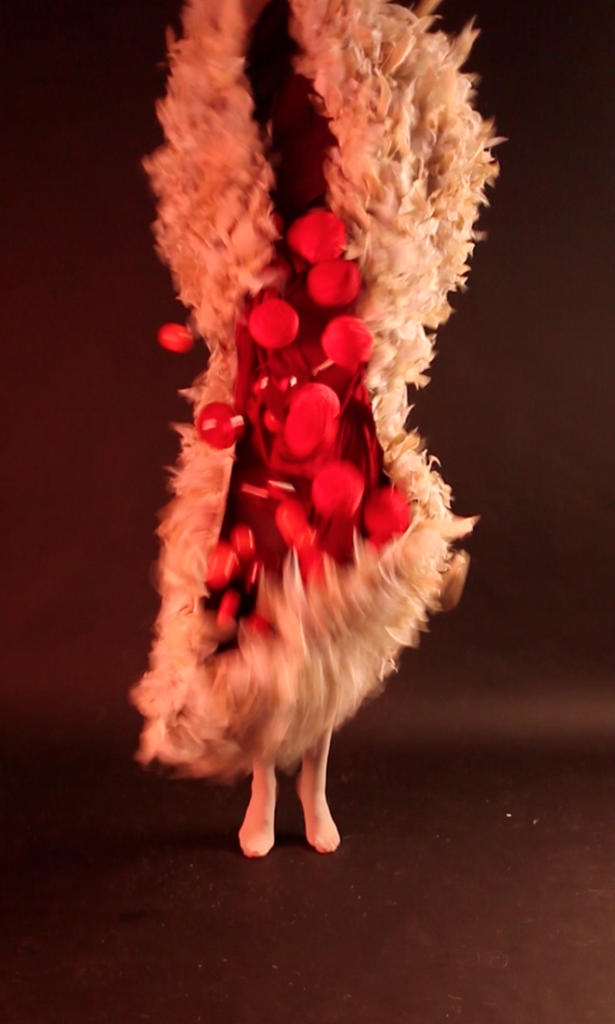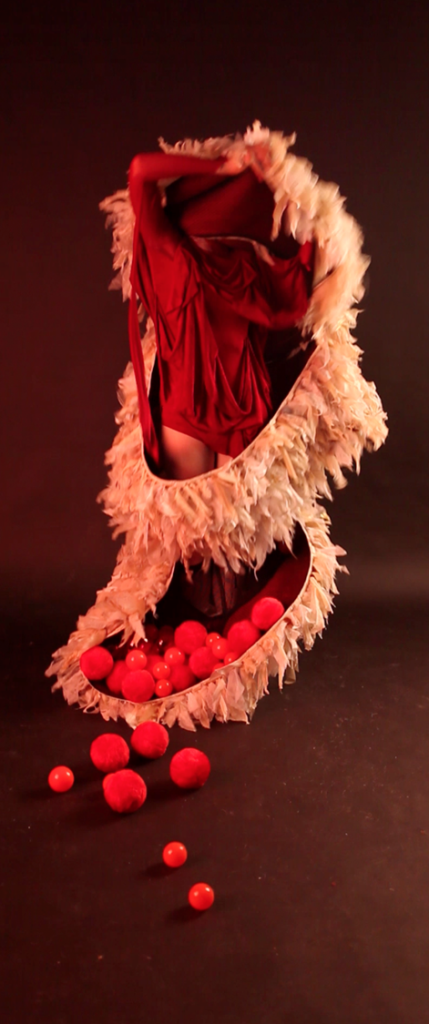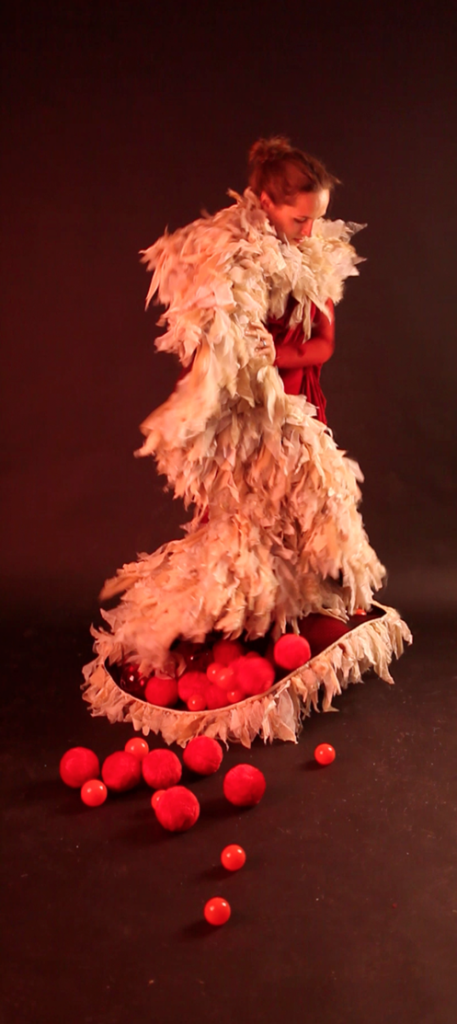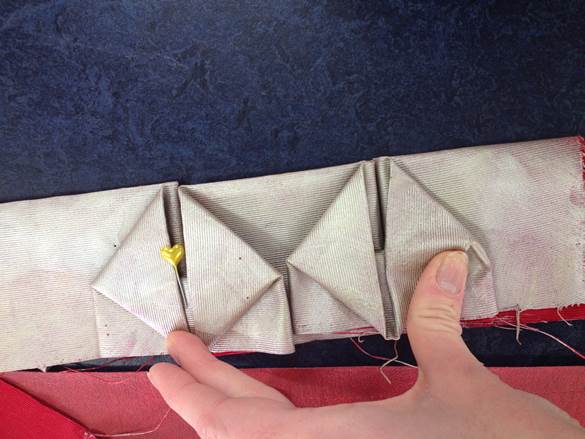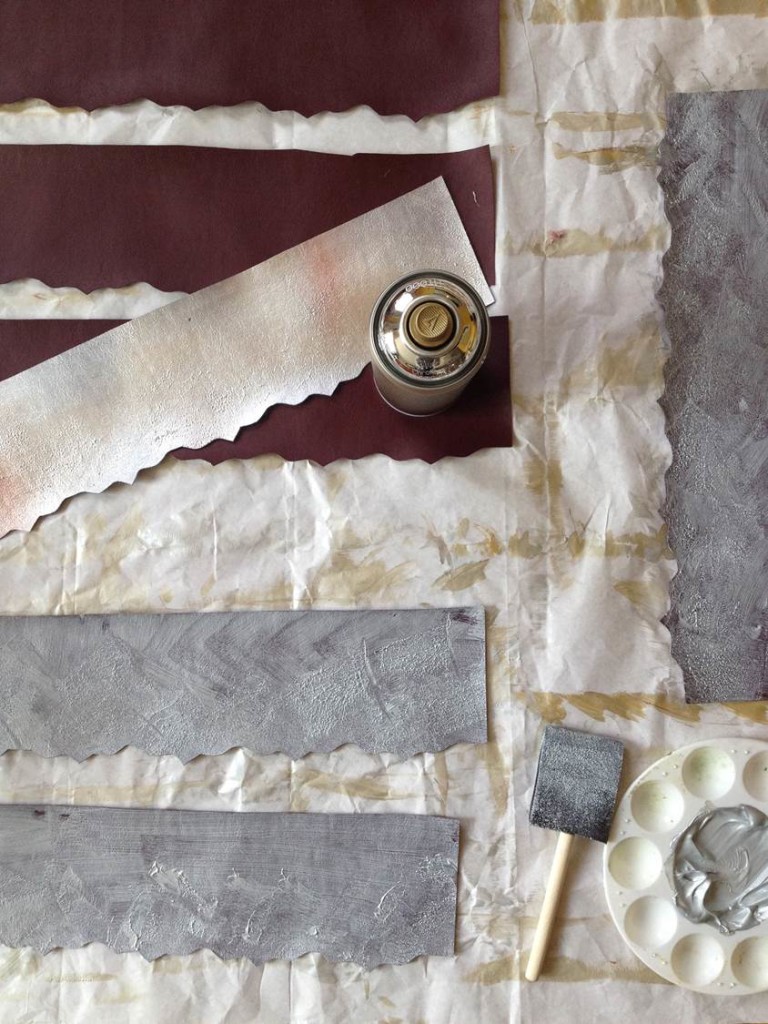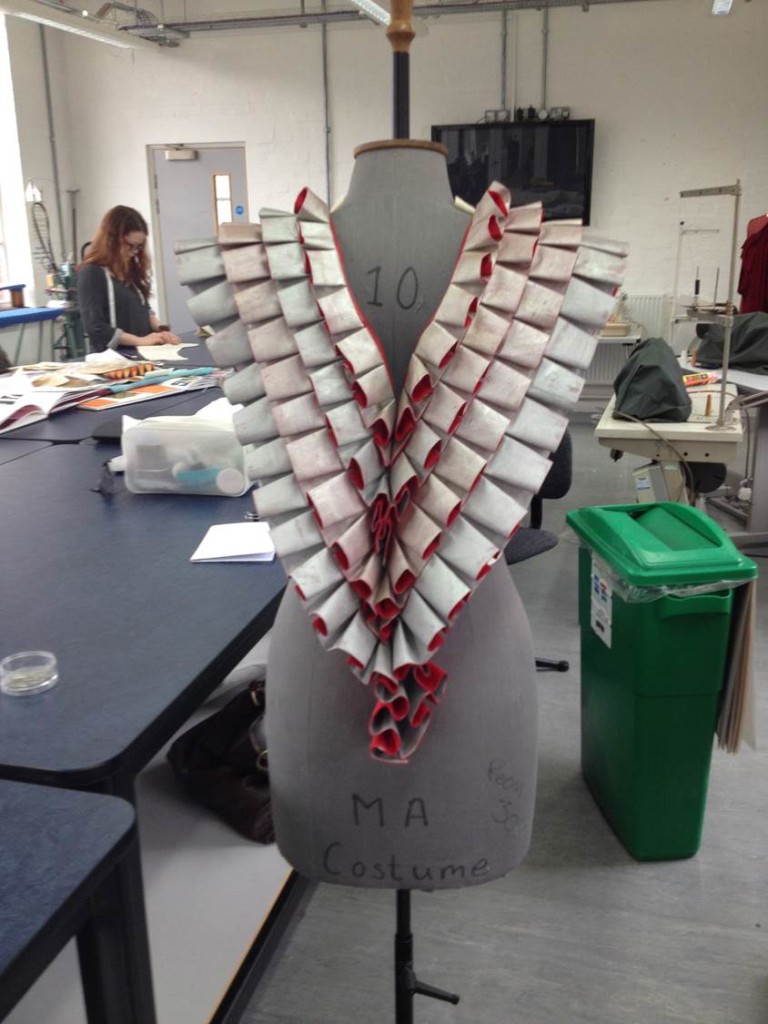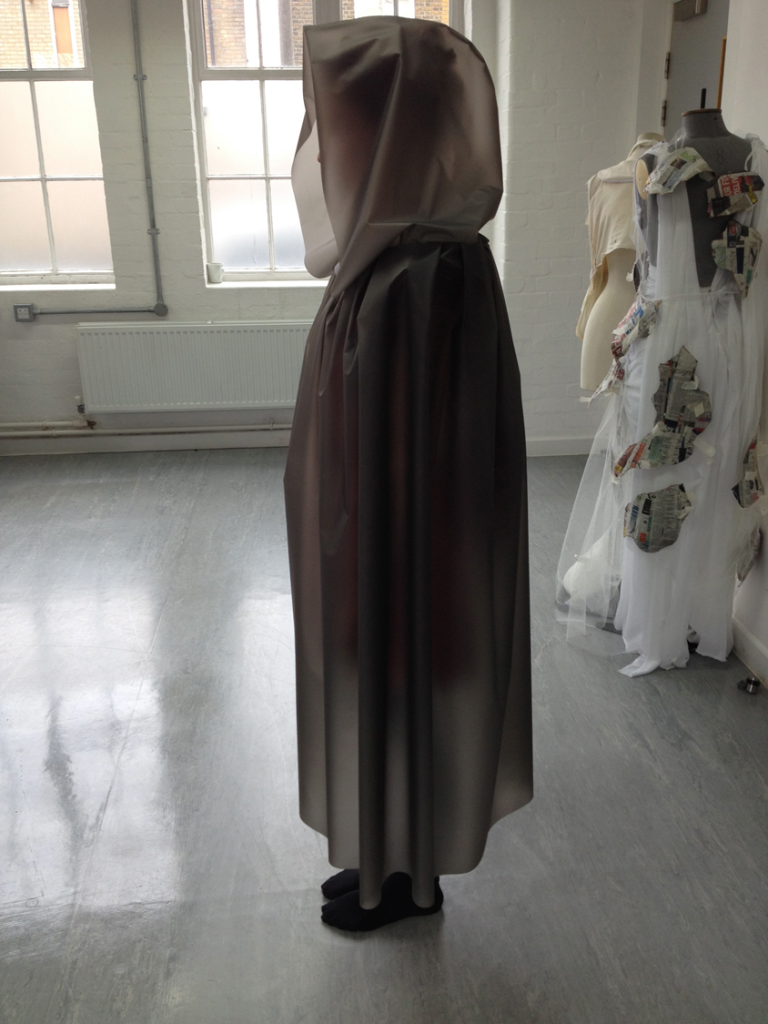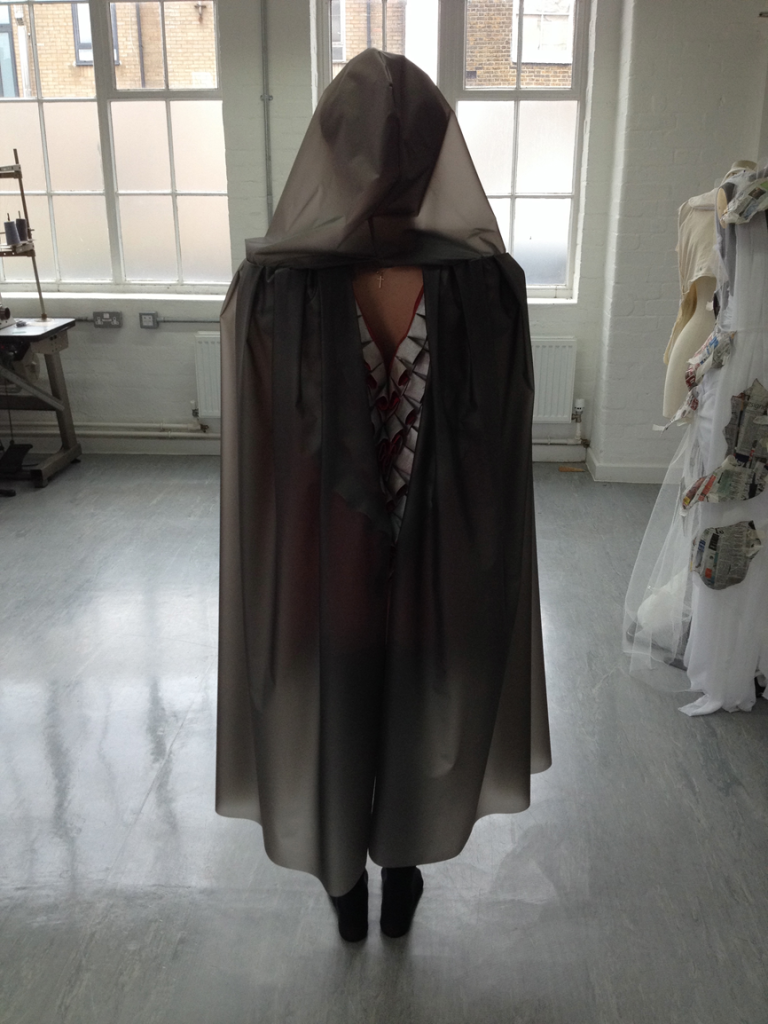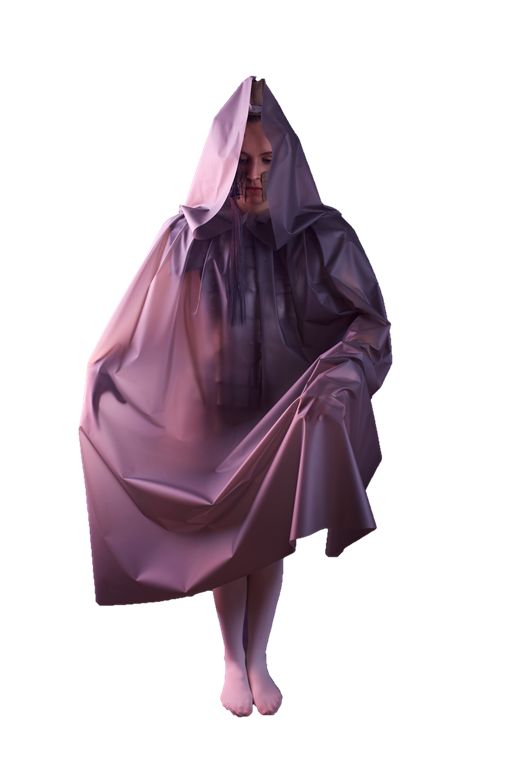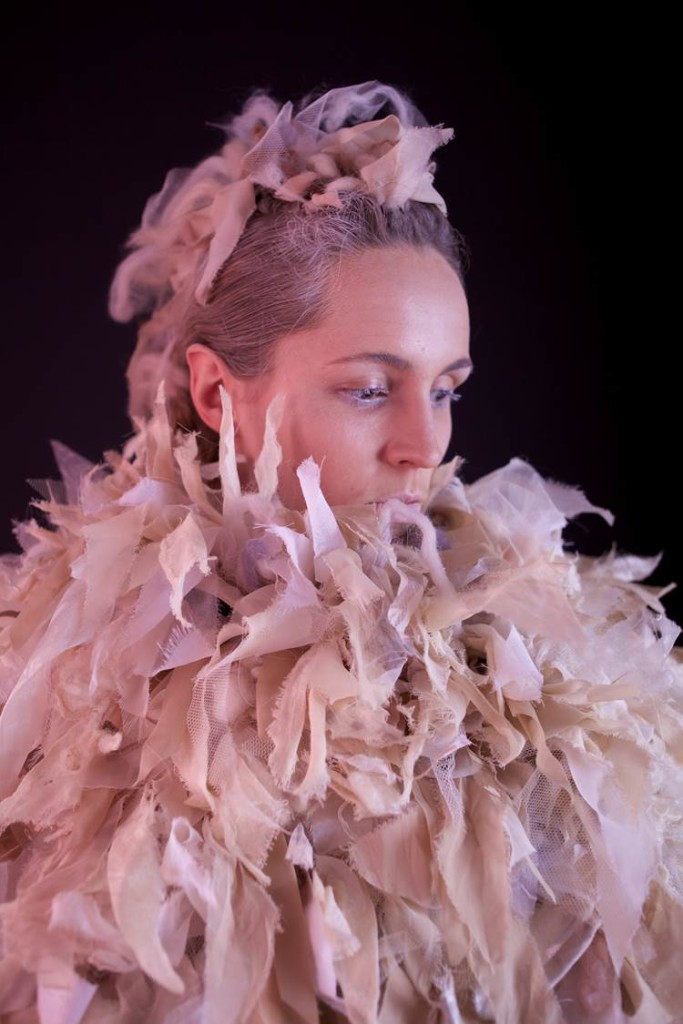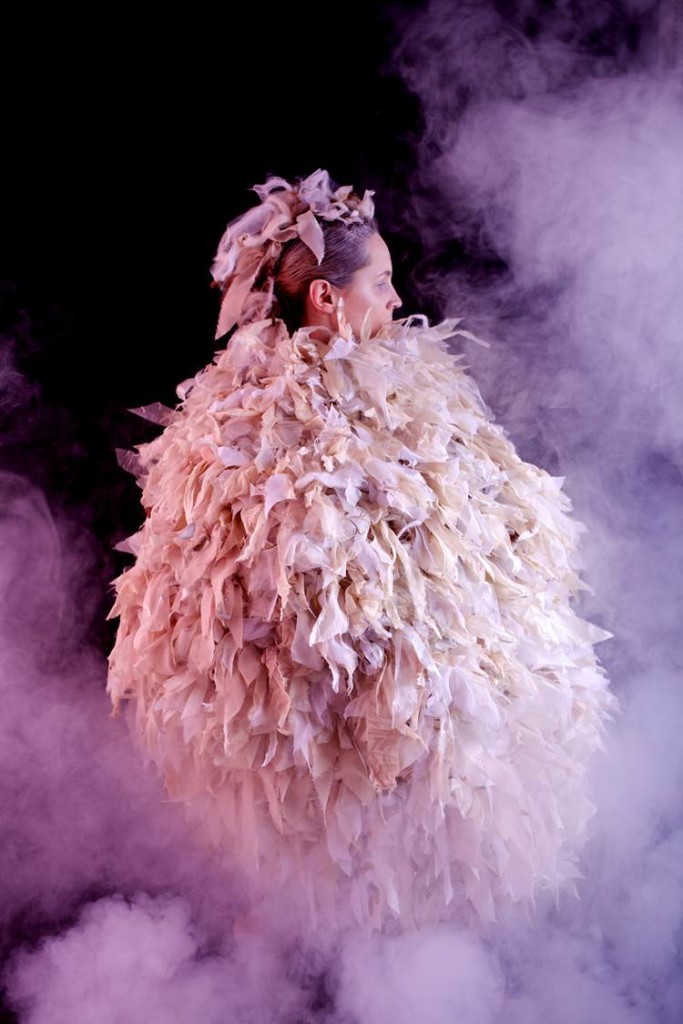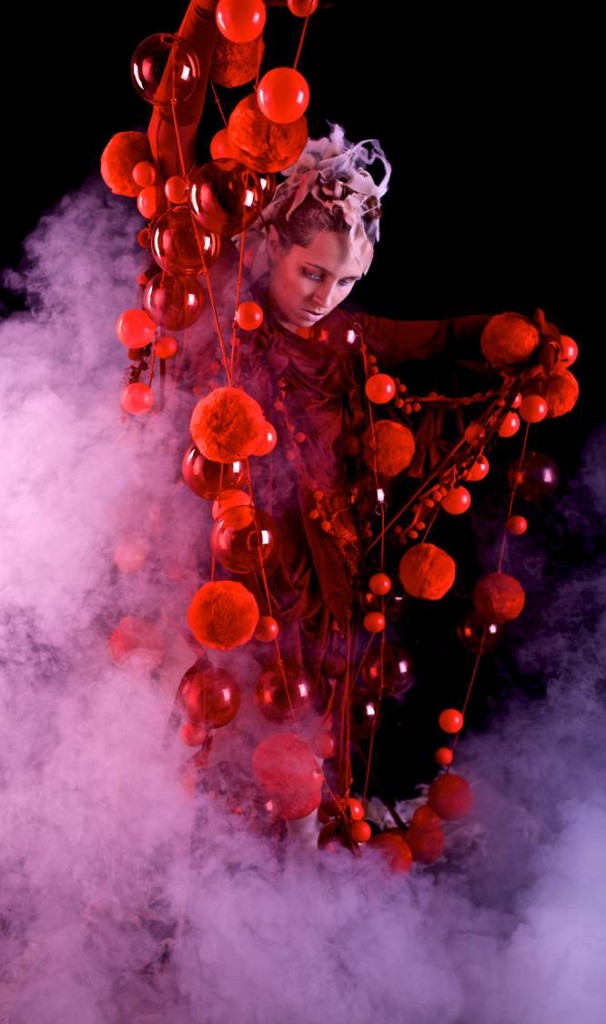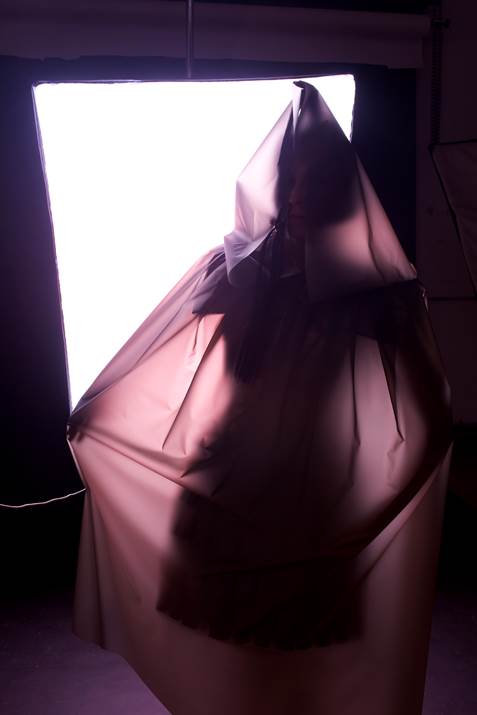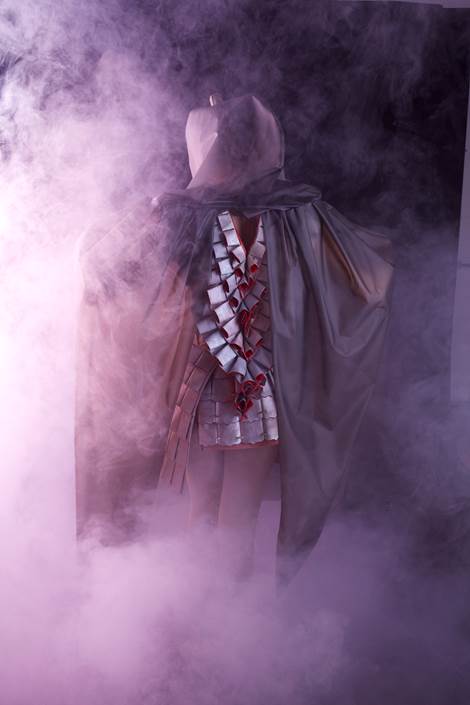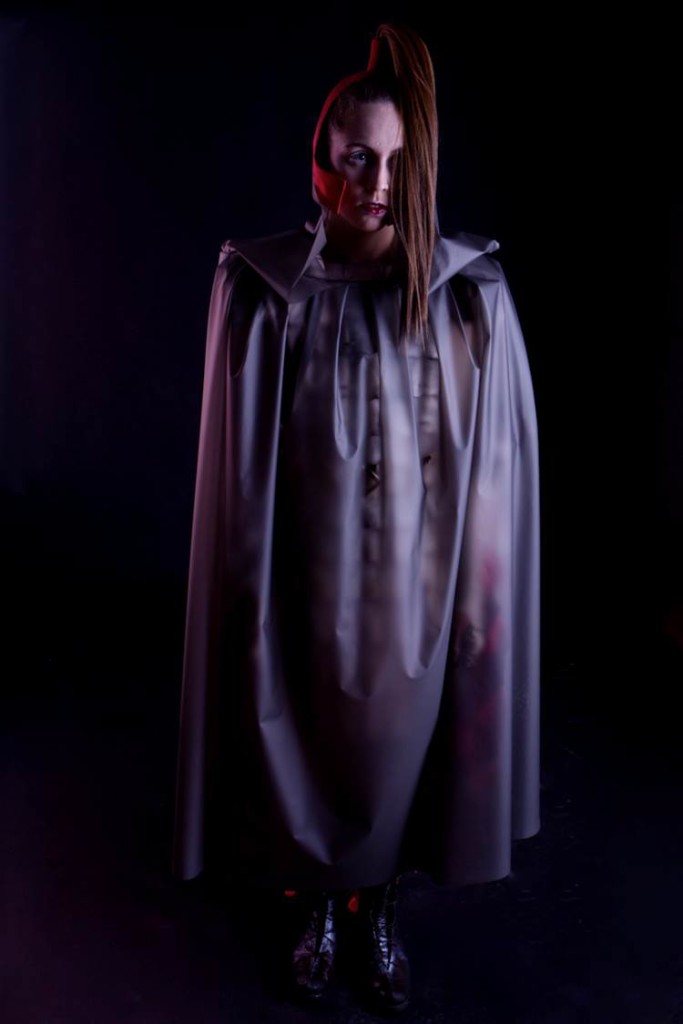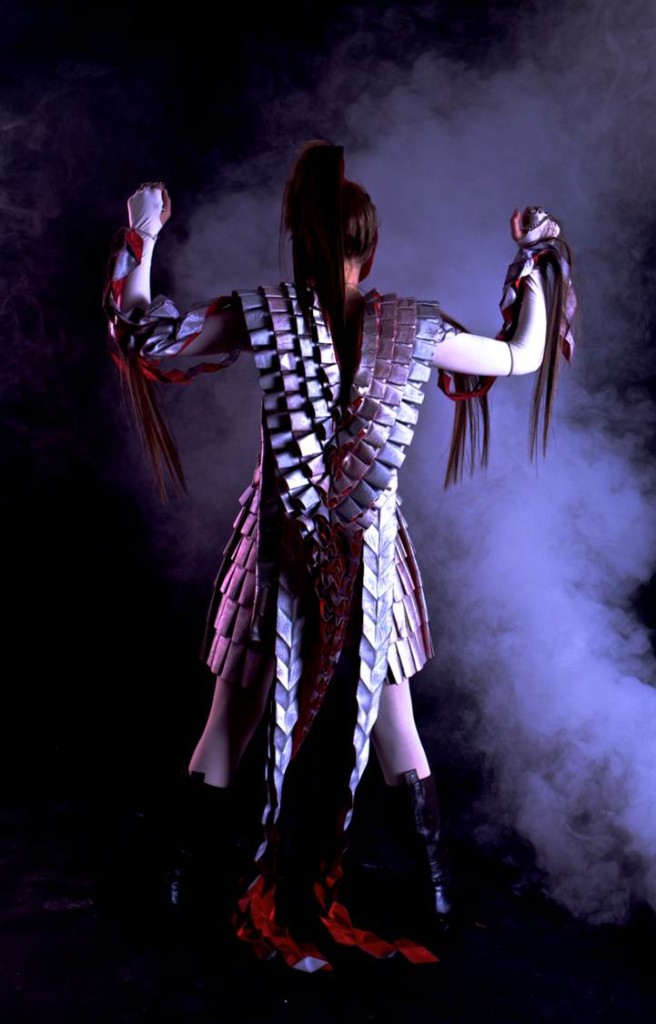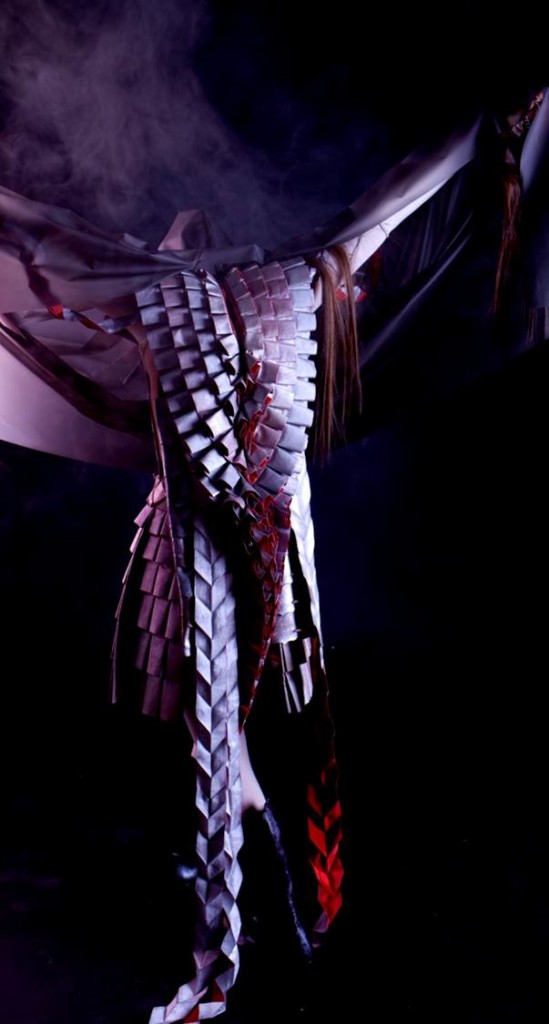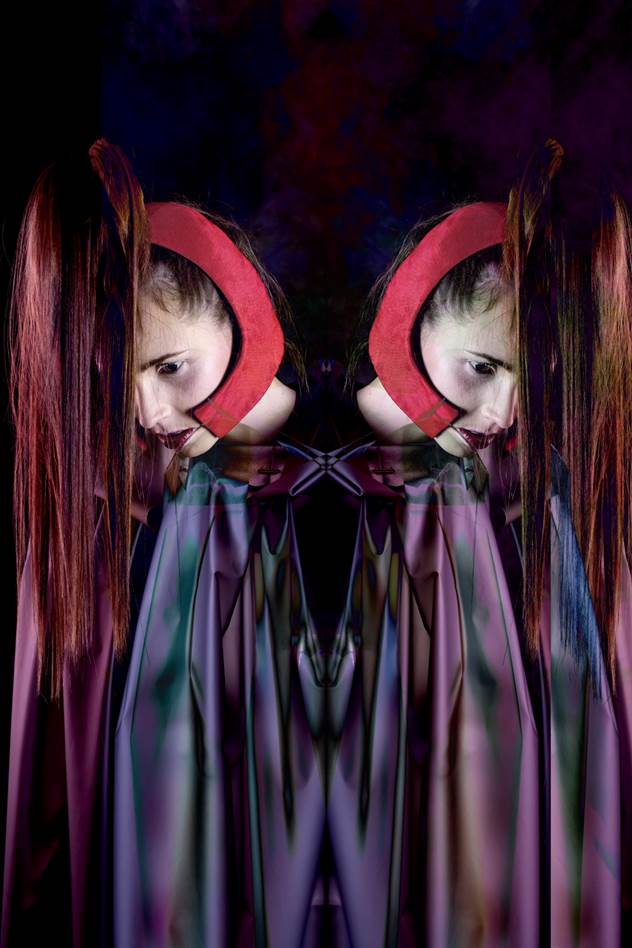by Katie-May Boyd, February 2016, Silent Signal Symposium.
I’m Katie-May Boyd and I’m talking today about The Parasite Project. This is a venture that was born during my Costume for performance degree at London College of Fashion, when I decided that I wanted to join my two passions of science and costume. Obviously on the surface these two things are a world apart.
Introduction
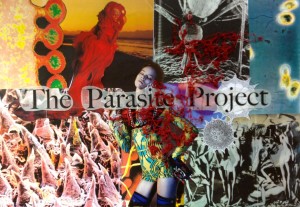
So I started with biology and the medical sciences have always been the area that I have been drawn to so, from there I explored artists who wrote, painted, performed – produced work when they were in the clutches of illness or disease. Because for me studying this work, feels like an insight into the body of the artists. Looking around this area brought to particularly to parasites, which really captured my interest because of the tumultuous relationship that occurs between host and parasite; they are something that becomes a part of you, use your cells as a home, makes you attack yourself from the inside, controls the behaviour of the host even. From a design perspective this play with identity and power is really interesting.
Malaria was the parasite that I chose to investigate. Partly because of its many life forms and complex stages and also the fact that it effects so many millions of people, if I can communicate the scientific information in an engaging and visual way, it may mean that more, people who don’t learn as well in conventional way, will be able to understand this devastating disease.
The outcome of the project is two costumes, being performed in a short film. These illustrate moments in the life cycle of Malaria parasite within the human host.
Project aims
What I wanted to achieve with the project was exploration of the combination of science and art. I wanted to experiment with how I could bring to life these scientific ideas and processes so you could see and touch them. To express the parasites’ beautiful, meticulous structure, the intelligence of this single celled organisms. But also juxtapose it with the devastating effect they have on us – the pain and suffering. So these themes, beauty and pain, microscopic and macroscopic us and them, these are the focuses that lead the project.
Inspiration
One of my major inspirations was Helen and Kate Storey’s work, ‘Primitive Streak’, in which they created wearable pieces inspired by the first 1000 hours of life in the womb. Being similar to what I wanted to achieve I asked Helen Storey (who is a fellow at London College of Fashion) for some advise and she told me to go to the lab and “be a sponge” to soak up as much information as possible.
Collaboration
I started a collaboration with the Wellcome trust Centre for Molecular Parasitology at Glasgow University during my preliminary research to gain a deeper knowledge of the science behind malaria – as of course it was the integral part of the project. I got to look all around the lab, play with different things, hear about the research that was underway and it let me see what aspects of the parasites were particularly fascinating to the people who were so passionate about them. I specifically worked with Dr Sonya Taylor who gave me many insights into malaria, including explaining in depth the life cycle of the parasite, I’ll explain briefly the stages that occur in the human host.
Stages of malaria in the human host
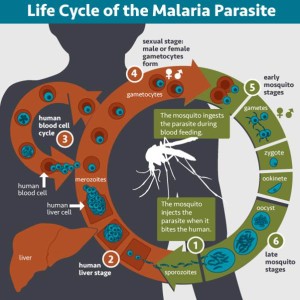
Whilst the mosquito takes a blood meal she injects about 50,000 sporozoites into our blood system. Maybe about a 100 of those will make it our liver, but you only need 1. Because they replicate inside the liver cells and within a week one sporozite could generate 40,000 merozites. This is the silent stage of the infection, you don’t see any symptoms, nothing. The liver cells then rupture, releasing the merozites into the blood stream. Then these merozites go on to invade our red blood cells, these then in turn will rupture, giving you your clinical symptoms – the fevers and chills. So the cycle continues, the merozites continue to invade more and more red blood cells, the process being asexual up till by an unknown trigger 20% of those will transform into male and female gametocytes, and be ready to be taken up by the mosquito.
The unseen
While showing me slides of each stage Dr Taylor said: “ The one image we don’t have is the rupture of the parasites into merozoites in the liver because that takes place in a human and so you can’t mimic that.”
This has inspired me to show what happens at this point… So from there I thought I want to illustrate these points that are unseen under the microscope. And the moments that I focused on were:
- Formation of Gametocytes
- Rupture of the liver cell
Character Analysis and Development
Coming from a costume perspective a lot of the design process for me involves character analysis, what makes the character tick? Who are they? What’s their background, habits? I applied these questions to the two ‘character’ moments and developed the design from there.
Rupture of the Liver Cells
For this character I focused on the change from the ‘silent stage’, with no symptoms – your body is in ignorant bliss. To the rupturing – this moment of violence, where suddenly you’re attacked from the inside. I wanted to illustrate this by having the aura of comfort, softness and warmth spliced together with speed, anger and viciousness. I used a very old technique called rag rugging to replicate the surface of the liver cell. I loved the manipulation of this traditional rug making technique, taking it out of its context to create a unfamiliar fabric, with such movement and texture This created a sphere around the performer, echoing the liver cell. With the use of 400 magnates we see this rupture, realising the stretch suit with spiralling red fabric and balls depicts the multiplying merozoites, leaving the cell wall discarded to the floor.
Formation of the Gametocytes
The formation of the Gametocytes character became quite conceptual for me, being all about the change in status between the parasite and the human, the parasite has been gaining in strength and complexity, ready for their next host, effectively conquered the body which has been getting weaker and weaker. This to me seemed sinister, militant. So I drew reference from at samurai armour, roman worriers and reptiles.
In both costumes I was keen to use unusual fabrics or to make my own – these characters are not human, I didn’t want the costume of the performer to be mistaken for clothes. I wanted an unfamiliar edge to them. I used a old technique of pleating, that involves putting the fabric in the oven excitingly. I also used plastics, leather and hair.
The shrowd-like grey cloak here represents a red blood cell which has invaded and commandeered by the plasmodium, unseen by our immune system. During the performance the cloak is manipulated and removed revealing the sexual animalistic sophistication of the developed parasite. Belittling further the weakness of the host. Personification of the Parasite over the human.
Project outcome
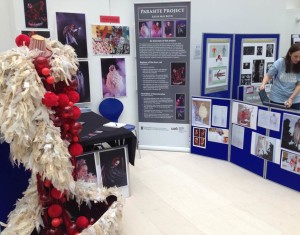 The project was shown as part of the Science Sunday event of Glasgow Science Festival, where it was well received and I was able to collect some useful feedback with the aim of exhibiting at other Science Festivals.
The project was shown as part of the Science Sunday event of Glasgow Science Festival, where it was well received and I was able to collect some useful feedback with the aim of exhibiting at other Science Festivals.
I also created a lesson plan with an A-Level Biology teacher and I’m keen to take it in to schools and learning environments.
Katie-May Boyd is a Costumier with a first class honours in Costume for Performance from the London College of Fashion. During her final year of this course she worked on the Parasite Project with the scientists from the Wellcome Trust Centre for Parasitology at the University of Glasgow.
Katie-May’s passions lie in the unusual ways that costumes, textiles and the body can ignite people’s interest and understanding of complex ideas in and around the biological sciences.
Her past work has included dance costumes at The Royal Ballet School, tech-fashion hybrids at Studio OX and costume-prop creations for the London 2012 Olympic Ceremonies. Currently she produces costumes for Madame Tussauds. She hopes to undertake a Masters in Art and Science at Central Saint Martins in the next academic year.


